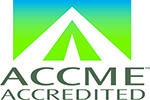
Release Date: February 9, 2017
Expiration date: August 9, 2017
Estimated Time to Complete Activity: 1.0 hours
CME ACCREDITATION AND DESIGNATION
 The Cardiovascular Research Foundation is accredited by the Accreditation Council for Continuing Medical Education to provide continuing medical education for physicians.
The Cardiovascular Research Foundation is accredited by the Accreditation Council for Continuing Medical Education to provide continuing medical education for physicians.
The Cardiovascular Research Foundation designates this activity for a maximum of 1.0 AMA PRA Category 1 Credit™. Physicians should claim only the credit commensurate with the extent of their participation in the activity.
Documentation of awarded credit is provided for participants in exchange for completed activity evaluations.
OVERVIEW
This program will look at TAVR performance and provide a clear understanding of the surgical risk strata identifying extreme, high, intermediate, and low risk patients. Throughout the discussion the participants will gain knowledge and tips on improving the selection for TAVR patients and the future of TAVR in low and intermediate risk patients.
Over the next decade, there will be a dramatic increase in the number of TAVR procedures performed in the United States. In order to perform TAVR successfully, it’s critical to have a clear understanding of the surgical risk strata identifying extreme, high, intermediate, and low risk patients.
Additionally, expanded indications for the successful use of TAVR in the low risk patient will need to include multi-disciplinary heart teams, a commitment to evidence-based practice, rapid technology enhancement, simplification of the procedure, and a reduction in complications. Sharing data from recent studies, the panel will explore their views on different complications such as para-valvular regurgitation, new pacemakers, stroke risk, and how to manage these concerns in different patients. Participants will gain knowledge and tips on improving the selection for TAVR patients and the future of TAVR in low and intermediate risk patients.
LEARNING OBJECTIVES
After participating in this event, learners will be able to:
- Describe the different methods of identifying extreme, high, intermediate, and low risk patients
- Identify the patients that would benefit from TAVR
- Discuss the role of the Heart Team in making informed decisions for patients
- Explain the complications that may arise with SAVR and TAVR
TARGET AUDIENCE
This activity is designed for interventional cardiologists, cardiac surgeons, clinical cardiologists, vascular medicine specialists, and other health care professionals.
ACTIVITY EVALUATION
Evaluation by questionnaire will address content, presentation, possible bias, and future educational needs.
DISCLOSURE STATEMENT
It is the policy of the Cardiovascular Research Foundation to ensure balance, independence, objectivity, and scientific rigor in all of its sponsored educational activities. Commercial support from industry does not influence educational content, faculty selection, and/or faculty presentations, and, therefore, does not compromise the scientific integrity of the educational activity.
Discussion of off-label product usage and/or off-label product use is made at the sole discretion of the faculty. Off-label product discussion and usage is not endorsed by the Cardiovascular Research Foundation or the conference directors of this activity.
Faculty participating in continuing medical education activities sponsored by the Cardiovascular Research Foundation are required to disclose to the activity audience any real or apparent conflicts of interest related to the content of their presentations. Faculty not complying with this policy are not permitted to participate in this activity.
DISCLOSURE SUMMARY
KEY: (G/R), Grant Support/Research Contract; (C/H/S), Consultant Fee/Honoraria/Speaker’s Bureau; (E), Equity; (R/I), Royalty/Intellectual Property Rights; (S), Salary/Salary Support; (O), Other Financial Benefit
Hasan Jilaihawi
(C/H/S) Edwards Lifesciences, Venus Medtech
Martin B. Leon
None
Tamim Nazif
None
Mark J. Russo
None
Faculty
Hasan Jilaihawi, MD
NYU Langone Medical Center
New York, NY
Martin B. Leon, MD
NewYork-Prebyterian/Columbia University Medical Center
New York, NY
Tamim Nazif, MD
NewYork-Prebyterian/Columbia University Medical Center
New York, NY
Mark J. Russo, MD
RWJBarnabas Health
Newark, NJ
Planning Committee
Arielle Gelardi (Planner)
(S) Cardiovascular Research Foundation
ACTIVITY SPONSORSHIP AND SUPPORT
This program is sponsored by the Cardiovascular Research Foundation. It is supported through an educational grant from Edwards Lifesciences and was developed without influence from commercial supporters.
HOW TO RECEIVE CME CREDIT
To obtain CME credit for this activity, participants must review all CME information, view all presentations in their entirety, and complete the Activity Evaluation Form. If you have any questions, please contact Arielle Gelardi at agelardi@crf.org
